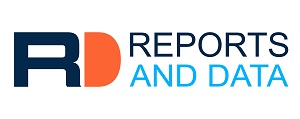Agricultural Adjuvants Market Set to Double by 2034, Driven by Sustainable Farming and Technological Advancements

Reports And Data
Agricultural Adjuvants Market is on track to witness significant growth over the next decade
VANCOUVER, BRITISH COLUMBIA, CANADA, August 20, 2025 /EINPresswire.com/ -- The global Agricultural Adjuvants Market is on track to witness significant growth over the next decade, with market size expected to rise from USD 3.5 billion in 2024 to USD 7.0 billion by 2034. This reflects a healthy compound annual growth rate (CAGR) of 7.2%, supported by rising food demand, precision farming practices, and the shift towards sustainable agriculture.Adjuvants, which are additives that improve the effectiveness of crop protection products, are becoming increasingly important in modern farming. Surfactants are projected to remain the largest segment due to their wide use in enhancing pesticide efficiency. At the same time, oil-based adjuvants are expected to be the fastest-growing category, driven by their role in sustainable farming methods.
Get Free Sample PDF Copy Of This Report At: https://www.reportsanddata.com/download-free-sample/003098
Herbicide applications continue to dominate demand, as effective weed management remains critical for ensuring higher yields. Fungicides and insecticides also contribute significantly to market growth, especially with rising concerns over crop health and pest control.
From a regional perspective, North America is expected to maintain its leadership in the Agricultural Adjuvants Market, supported by advanced farming technologies and regulatory backing. However, Asia-Pacific is forecast to be the fastest-growing region, fueled by expanding agricultural activity, population growth, and the rapid adoption of modern farming practices.
Market momentum is also shaped by sustainability and innovation. The growing need for eco-friendly solutions is pushing companies to develop bio-based adjuvants, supported by increasing investments in research and development. In 2024, global R&D spending in specialty chemicals rose by 18%, reflecting the industry’s focus on greener alternatives. The European Union’s Green Deal, which aims to cut chemical pesticide use by 50% by 2030, is also playing a key role in accelerating the adoption of advanced and efficient adjuvant solutions.
Another major driver is the integration of technology in agriculture. Precision farming, growing at an annual adoption rate of 10%, is increasing demand for adjuvants that maximize the performance of pesticides. Digital tools such as AI and IoT are improving the precision and effectiveness of adjuvant applications, further supporting market growth.
In terms of production, the Agricultural Adjuvants Market is expected to reach a volume of 1.2 million tons in 2024 and grow to 2.4 million tons by 2034, aligning with the overall market CAGR of 7.2%. This balanced growth highlights both steady demand and the rising value of advanced formulations.
However, the market also faces challenges. Regulatory hurdles around chemical use and environmental impact are adding complexity for manufacturers. Compliance increases costs and slows down product introductions. Raw material price volatility also remains a concern. For example, in Q1 2025, surfactant spot prices rose 10% due to shortages in feedstock supply, according to ICIS. Such fluctuations can impact pricing strategies and disrupt supply chains. In addition, shifting consumer preferences toward organic and natural farming methods are creating pressure for the development of bio-based adjuvants, which require heavy investment in innovation.
Pricing trends across regions also vary. North America typically sees higher prices due to regulatory costs and logistics, while Asia-Pacific benefits from economies of scale and lower production expenses. To address volatility, companies are increasingly adopting AI-driven pricing models, which early adopters report have improved margins by nearly 2% while raising average selling prices by about 4%.
Leading companies in the sector, including BASF SE, DowDuPont, and Evonik Industries, are focusing on innovation and sustainability as core strategies. By investing in next-generation adjuvant technologies, these players aim to provide farmers with more effective, eco-friendly, and cost-efficient solutions.
Request customization on the report @ https://www.reportsanddata.com/request-customization-form/003098
Overall, the Agricultural Adjuvants Market is entering a transformative period. With global food demand rising, sustainability becoming central to farming, and technology reshaping agricultural practices, the market is well-positioned for strong and steady growth through 2034.
John W
Reports and Data
+1 2127101370
email us here
Legal Disclaimer:
EIN Presswire provides this news content "as is" without warranty of any kind. We do not accept any responsibility or liability for the accuracy, content, images, videos, licenses, completeness, legality, or reliability of the information contained in this article. If you have any complaints or copyright issues related to this article, kindly contact the author above.
Artificial Intelligence in Cybersecurity Market Set to Transform Threat Detection and Risk Management
Rising Vehicle Software Integration Drives Automotive OS Market to USD 20.4 Billion by 2032
CAGR of 3.5% | Alpaca Fiber Market Size, 2025 | Growing Demand and Business Outlook by 2031
Więcej ważnych informacji
 Jedynka Newserii
Jedynka Newserii

 Jedynka Newserii
Jedynka Newserii

Prawo

Kolejne polskie miasta chcą być przyjazne dzieciom. Planują stworzyć najmłodszym dobre warunki do rozwoju
Cztery miasta w Polsce posiadają tytuł Miasta Przyjaznego Dzieciom nadany przez UNICEF Polska. Dziewięć kolejnych miast czeka na certyfikację, a w ostatnich miesiącach do programu zgłosiło się kilka następnych. Na całym świecie inicjatywa została przyjęta już w ponad 4 tys. samorządów, a w Hiszpanii objęła połowę dziecięcej populacji miast. Program UNICEF-u ma na celu zachęcenie włodarzy do traktowania najmłodszych obywateli w sposób podmiotowy, respektowania ich praw i zaproszenia ich do współdecydowania o przyszłości.
Przemysł
W ciągu roku w Polsce ubyło 500 przedsiębiorstw odzieżowo-tekstylnych. Problemem są spadki zamówień z Europy Zachodniej i wzrost kosztów

Wartość rynku odzieżowego w Polsce wynosi 66,9 mld zł, z czego 10 mld zł to wartość krajowej produkcji – wynika z danych PIOT. Od czasu pandemii branża mierzy się z szeregiem wyzwań, wśród których najpoważniejsze to wzrost kosztów pracy i produkcji, przerwane łańcuchy dostaw i spadek zamówień – zarówno w kraju, jak i za granicą, a także wzrost nieuczciwej konkurencji na rynku, czyli głównie importu z Chin. Skala wyzwań sprawia, że w ubiegłym roku z rynku zniknęło 500 firm. Producenci odzieży apelują do rządu o wsparcie.
Handel
D. Obajtek: Orlen powinien być o 30–40 proc. większą spółką. Byłoby to z korzyścią dla konsumentów

Orlen jest największym polskim przedsiębiorstwem. Jego przychody ze sprzedaży w 2024 roku wyniosły blisko 295 mln zł, a rok wcześniej – ponad 372 mln – wynika z raportu Rzeczpospolitej „Lista 500”. W ubiegłorocznym rankingu Fortune 500 uwzględniającym największe korporacje znalazł się na 216. miejscu na świecie i 44. w Europie. Według Daniela Obajtka, europosła PiS-u i byłego prezesa Orlenu, spółka powinna jeszcze urosnąć, tym samym gwarantując konsumentom szereg korzyści, a także przyspieszać inwestycje m.in. w obszarze petrochemii i energetyki zero- oraz niskoemisyjnej.
Partner serwisu
Szkolenia

Akademia Newserii
Akademia Newserii to projekt, w ramach którego najlepsi polscy dziennikarze biznesowi, giełdowi oraz lifestylowi, a także szkoleniowcy z wieloletnim doświadczeniem dzielą się swoją wiedzą nt. pracy z mediami.








.gif)



